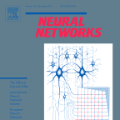Spiking Neural Networks (SNNs) and transformers represent two powerful paradigms in neural computation, known for their low power consumption and ability to capture feature dependencies, respectively. However, transformer architectures typically involve multiple types of computational layers, including linear layers for MLP modules and classification heads, convolution layers for tokenizers, and dot product computations for self-attention mechanisms. These diverse operations pose significant challenges for hardware accelerator design, and to our knowledge, there is not yet a hardware solution that leverages spike-form data from SNNs for transformer architectures. In this paper, we introduce VESTA, a novel hardware design that synergizes these technologies, presenting unified Processing Elements (PEs) capable of efficiently performing all three types of computations crucial to transformer structures. VESTA uniquely benefits from the spike-form outputs of the Spike Neuron Layers \cite{zhou2024spikformer}, simplifying multiplication operations by reducing them from handling two 8-bit integers to handling one 8-bit integer and a binary spike. This reduction enables the use of multiplexers in the PE module, significantly enhancing computational efficiency while maintaining the low-power advantage of SNNs. Experimental results show that the core area of VESTA is \(0.844 mm^2\). It operates at 500MHz and is capable of real-time image classification at 30 fps.
翻译:暂无翻译




